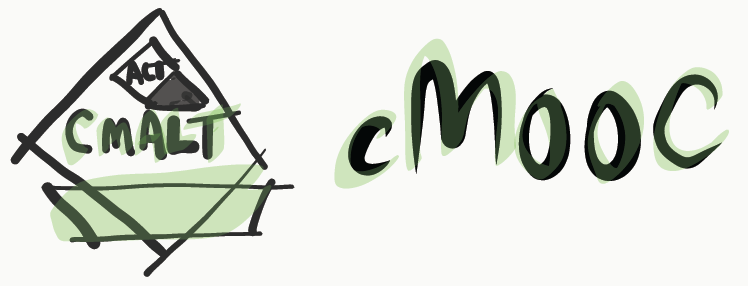This week we cover an overview of digital publishing formats and CMALT portfolio submission requirements. We hope you have gained an understanding of what a CMALT eportfolio entails, and although the 7 weeks finishes at the end of this week, this is just the beginning for the community that has been established! We encourage you to continue working on developing and sharing your portfolios. You are invited to further PD activities such as
- A SOTEL Research Cluster
- ASCILITE Mobile Learning SIG
- Submit an abstract (500 words) for the https://SoTEL.nz Symposium – the format for 2023 presentations is a pre recorded Pecha Kucha: 20 slides, 20 seconds each with audio.
- Call For Papers for PJTEL
You are also invited to take part in a final participant survey to give us feedback. This week we will also host our final Participant Webinar reflecting upon their CMALT cMOOC experience.
Feedback Invitation:
We want to get your feedback on how we can improve #CMALTcMOOC. We have an information sheet, consent form, and online survey for your feedback. Also, if you are willing to let us use your CMALT portfolio as an example there is also a portfolio showcase opt-in. The links are:
Info Sheet: http://bit.ly/1XywKQ5
Consent Form: http://bit.ly/26bPN4B
Survey: https://goo.gl/forms/cDhKGbGbudf221312
Portfolio showcase option: http://goo.gl/forms/J629u943tGsM4OGy2
Future Plans
Remember to provide peer feedback on each other’s developing CMALT portfolios and share resources via the MS Teams channel
While the “Future Plans” section is not assessed you must complete it. This can be as detailed as you like. The purpose of this is to help you plan for your professional development; it will also be useful when preparing to meet your continuing professional development requirement to remain in good standing.
CMALT portfolios can be submitted for review by three different dates throughout the year: 31 January, 31 May, and 30 October https://www.alt.ac.uk/certified-membership/submitting-portfolio
CMALT ePortfolio Examples
A list of Australasian CMALT holders can be found at: http://ascilite.org/get-involved/cmalt/
Some example CMALT portfolios:
- Matthew Guinibert (Communications)
- Danni Mulrennan (Journalism)
- Laurent Antonczak (COLAB)
- Thomas Cochrane (CfLAT)
- Todd Stretton (Physiotherapy)
- Raj Shekhawat (CfLAT)



